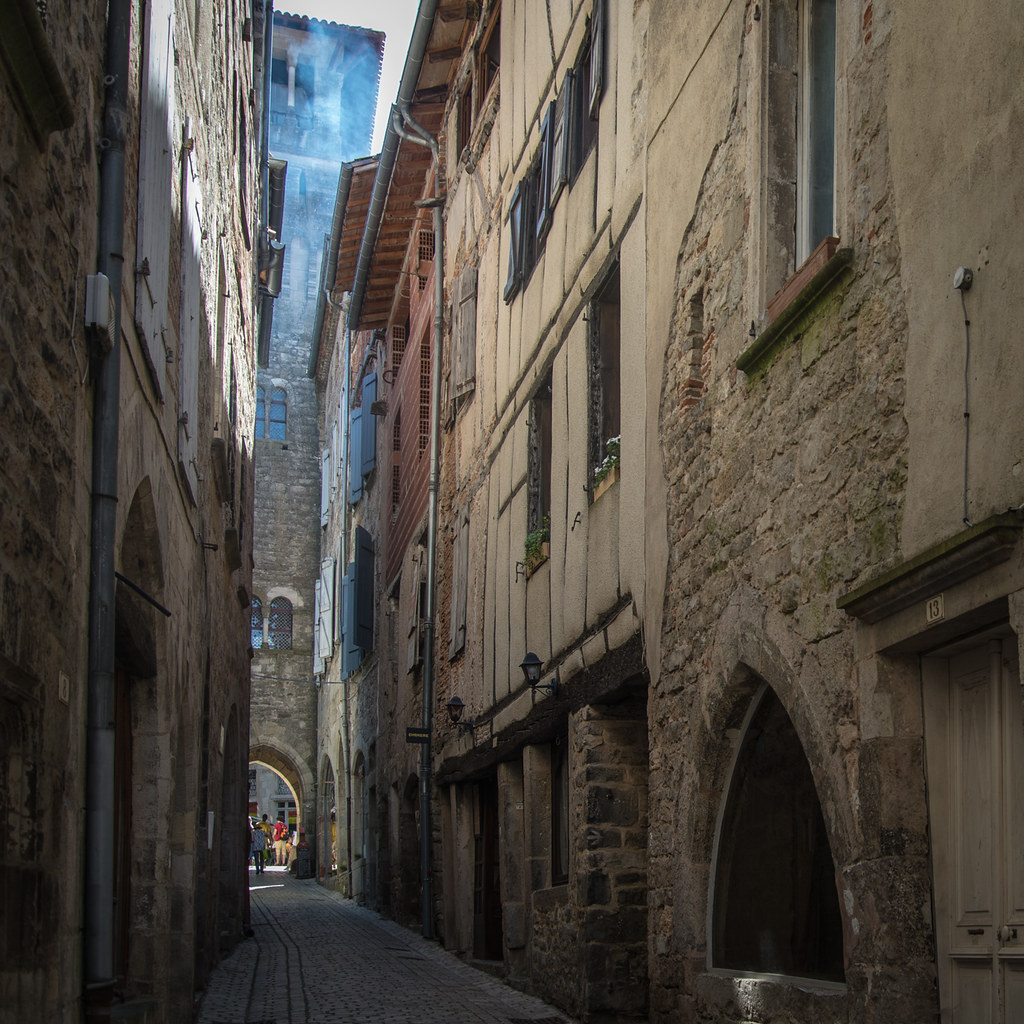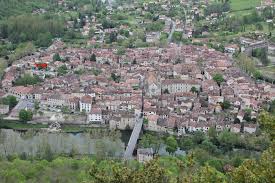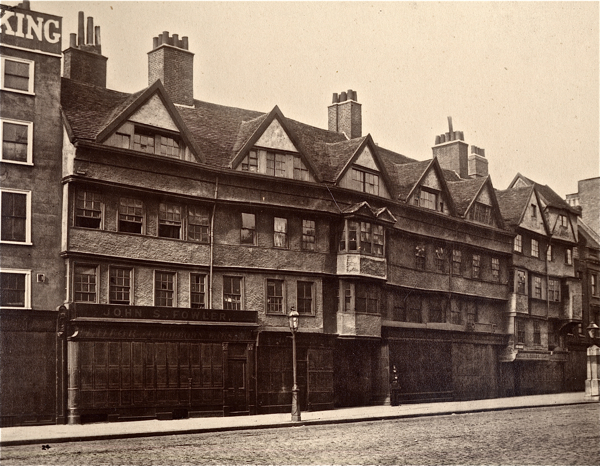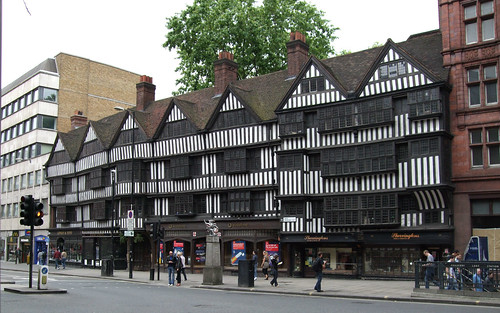A photo that popped up on Flickr (of St Antonin Noble Val) reminded me of the verticality that was so prevalent in crowded medieval towns, bounded by legal distinctions on land and people/ethnicity as much as by their walls
Summery St Antonin, a set by
Ruth Flickr on Flickr.

 |
| Medieval centre of St Antonin |
There is little left of medieval London, a few churches and liveried companies (guild) halls survive on the east side of the city, where they escaped the flames of the Great Fire. An exception though - outside the limits of both fire and the walled city, is that of Staple Inn. It manages to convey both the height of old London buildings and their crowded - even cramped - nature. High-status buildings, such as Staple Hall and/or private dwellings, would combine ordinary shops, rooms ("chambres") and garretts to the noisier street frontage, with yards and gardens behind (the "fore"court and a more private court to the rear)
 |
| Staple in as it was |
to the sides were stables, kitchens, bakers, brewers, and all the accommodation needed for a great household, and in the centre of the web - the great hall - where communal meals cemented bonds and rehearsed old hierarchies ("below the salt")
 |
| Staple Inn today |
 |
| Great Hall, Staple Inn |





No comments:
Post a Comment